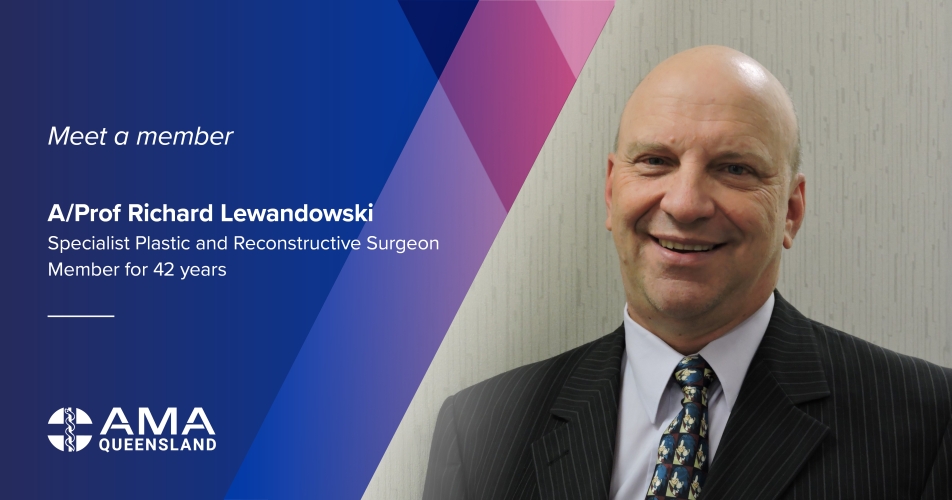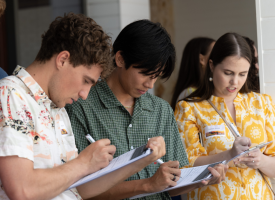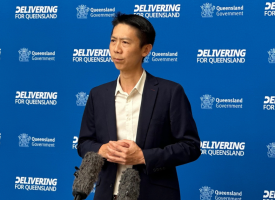Meet a member – A/Prof Richard Lewandowski
If you’re ever lucky enough to meet specialist plastic and reconstructive surgeon and founder of Operation Smile Australia, Associate Professor Richard Lewandowski, you’re guaranteed to leave the room grinning from ear to ear.

If you’re ever lucky enough to meet specialist plastic and reconstructive surgeon and founder of Operation Smile Australia, Associate Professor Richard Lewandowski, you’re guaranteed to leave the room grinning from ear to ear.
Predominantly because of his work providing facial surgery to repair deformities in children and adults, but also thanks to his infectious joy and passion for helping others.
His career aspirations began with an interest in both science and architecture.
Unable to decide, he figured a surgeon was the best of both worlds – humorously calling himself a “surgical architect”.
“Plastic surgery is largely about rebuilding, redesigning and reshaping,” A/Prof Lewandowski said.
“The word plastic just means to remould or reshape. So there's that architectural bit that says – if you had to do something in medicine, repairing or reconstructing is probably the thing I wanted to do.”
His interest in cleft and craniomaxillofacial surgery led him to founding Operation Smile in Australia.
“I landed up in Virginia in the US to do my craniofacial subspecialist training and one of my bosses, Bill McGee, had started Operation Smile,” he said.
“It was still a little bit fledgling in those days, and we used to look at some of the complex cases out there and try to bring them to the US for what would be exorbitant sums of money.
“So he and I decided that maybe this was something we could do from Australia. We planned to do all the complex stuff here while the US got more under-resourced countries to do things like assemble cleft lip and palate operations.
“It was about trying to meet a need that would otherwise be difficult to achieve.”
This year marks its 25th anniversary as a registered charity in Australia – run by and reliant entirely on its more than 200 volunteers.
“We've got programs in the Philippines, in Vietnam. We're going back to India to see how we can re-establish some more complex work over there... We also bring some of the specialists from those countries to Australia for further training. So it's multifaceted and pretty busy,” he said.
“Our aim is to teach rather than purely do. Because if we teach the locals and we help with limited amount of resources, we can teach and assist them in building their capacity.”
Like many doctors, A/Prof Lewandowski’s work extends far beyond his day job.
Although he suggested his workload was gradually slowing down, his schedule says otherwise.
Between travelling to North Queensland for surgery work, to Vietnam for Operation Smile and writing court reports for various patient injuries, he also runs the Craniofacial Clinic at Brisbane’s Mater Hospital and teaches medical students through the University of Queensland.
“I'll probably never give up teaching,” he said.
“What I love about it is some of the people that I teach as medical students then reappear as trainees in plastic surgery. So I've obviously made it sound really interesting.
“It's that joy of seeing people actually appreciating the teaching and then getting more absorbed in the specialty.”
His teaching methodology prioritises a balance of medical theory and practice with the history of the craft embedded.
“A major thing I want them to understand is that plastic surgery isn't something new. If you look at the history, we've been reconstructing noses for millennia,” he said.
“Even if they don’t end up becoming a surgeon, I love the idea that if they go into general practice, they have a really good understanding of what's available out there rather than this misconception that something's untreatable.
“My practice is more reconstructive than cosmetic, but sometimes there's a large overlap. You can't reconstruct something that looks horrible.
“There is this kind of myth that there are two types of plastic surgery, one that deals with appearance and one that deals with function. But in reality, the two go hand in hand.”
Consistent throughout all of his roles is his sturdy, professional philosophy – treating communities that otherwise wouldn’t get the help they need and deserve.
A/Prof Lewandowski joined AMA Queensland 42 years ago as a “no-brainer”.
“Back when I was a medical student, the AMA was really one of the only voices of the medical profession.
“Even more so when I set up specialist practice, because they helped us enormously with things like practice management and HR issues.
“I've sort of wound my practice down, but AMA Queensland is still involved in support in so many other ways, including industrial issues and workforce planning, which is critical as you get to the end of your career.”



